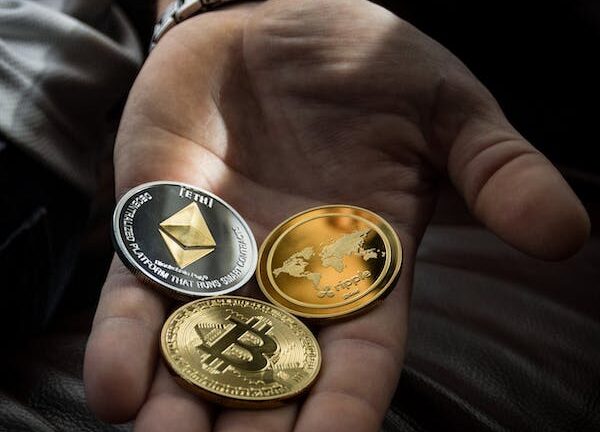When the time comes to retire, it’s natural to start wondering what you’ll do with your savings. However, the main issue is how to keep your retirement identity safe. In light of recent events, it’s clear that not even the market’s strongest sectors can be relied upon for stability.
Your best hope, therefore, is to amass valuable assets. Precious metals are one example of these assets. If you want to legally own more than a few of them, you’ll need a precious metals IRA rather than a traditional or Roth IRA.
Please explain this account. How do you set it up, specifically? Even more specifically, who do you arrange it with? Self-routed IRAs and the current market leader in rare-earth element IRAs are important to finding satisfactory solutions to these questions. Best Gold IRA Companies: Top 4 Precious Metals IRA Investment Accounts 2023 – Hindustan Times
Explained: IRA for Precious Metals.
You should now be aware that a precious metals IRA is only one of several options for protecting your savings against inflation and other forms of economic downturn. In that case, what are precious metal IRAs?
It’s important to know how rare-earth element IRAs differ from regular IRAs and precious metals IRAs before making a purchase.
However, a precious metals IRA is funded with actual gold, silver, platinum, or palladium instead of paper currency. Extremely Rare Earths A person with an individual retirement account (ira) has greater freedom to choose how their money is invested than with a traditional ira. Furthermore, unlike traditional IRAs, precious metals IRAs do not have annual payment restrictions. Investors seeking more rare-earth element exposure may wish to explore establishing a self-directed rare-earth elements Individual Retirement Account.
In addition, the annual contribution limitations for standard IRAs are generally $5,500 (or $6,500 for individuals over age 50), but the limits for precious metals Individual Retirement Accounts are substantially lower at $30,000 annually. This makes these accounts an attractive choice for people seeking to broaden their retirement portfolio.
Paper assets like stocks and bonds may be saved in individual retirement accounts (IRAs), which are among the most common types of pensions. However, a precious metals pension allows you to keep gold and other important physical rare-earth elements, as the name may indicate.
Individual retirement accounts are difficult to understand since they are not “physical” places to save money. An IRA custodian handles record-keeping for your rare-earth elements IRA, while a depository vault protects the physical assets. Using your individual retirement account is subject to particular IRS requirements, which further simplifies matters. If you fail to use it in accordance with the law’s requirements, you may be subject to tax penalties.
The low overhead that comes with an IRA is another standard selling point. You may need to spend as much as $300.00 every year on maintenance costs. Not included are the costs you’ll face for buying and transporting the precious metals themselves. In conclusion, the IRA is both a legal right and a responsibility since it gives you access to a pool of money that you must invest wisely.
Why invest in precious metals in your IRA?
Why would you want to go to the trouble of establishing a retirement account in precious metals? There are numerous good reasons to open such an account, but they all center on the advantages it provides.
Rare-earth element IRAs provide you options beyond diversification.
Is it true that no matter what sort of steel you invest in, you may only choose among four metals in a precious metals IRA? To put it simply, no. Individual retirement accounts may be used to store assets of any kind, even those unrelated to precious metals.
One option is to purchase stock in the companies that extract these metals straight from the ground. Gold bullion may also be used as collateral when purchasing government bonds. These are unique agreements that require the government to repay you, plus interest, after a certain length of time.
You shouldn’t even consider mixing paper assets with your precious metals if you have an IRA. What we need is passive income. While precious metals may hold their worth and even increase in price, they do not produce new cash. When you diversify your IRA with stocks and bonds, you ensure that your funds will not only maintain their value but also generate income for you.
The greatest thing is that, depending on IRS regulations, this income may be eligible for tax deferrals or exemptions. If you choose option A, you won’t have to worry about paying those taxes until far later. In the second case, your income is considered “tax free” since you are exempt from paying any taxes on it.
Unlike any other retirement option, a precious metal IRA allows you a high degree of discretion.
The fact is that you have very little say over the structure of most retirement funds available today. Monthly or annual withdrawals are made without your input, and the amount available to you at retirement is also predetermined.
An IRA is one of the few types of retirement accounts that allows you complete discretion over how the funds are spent. No one can prohibit you from doing anything you choose with your individual retirement account (IRA), even putting all of your money into gold. Rare coins and bars may be added to the account if desired. Every IRA provider also provides a method for withdrawing money from your account if you so want.
There are restrictions in place, such as a cap on the amount you may put in or take out each year. After all, a financial account with several practical benefits may quickly become a cover for tax evasion. Of course, the IRS would prefer that didn’t occur.
